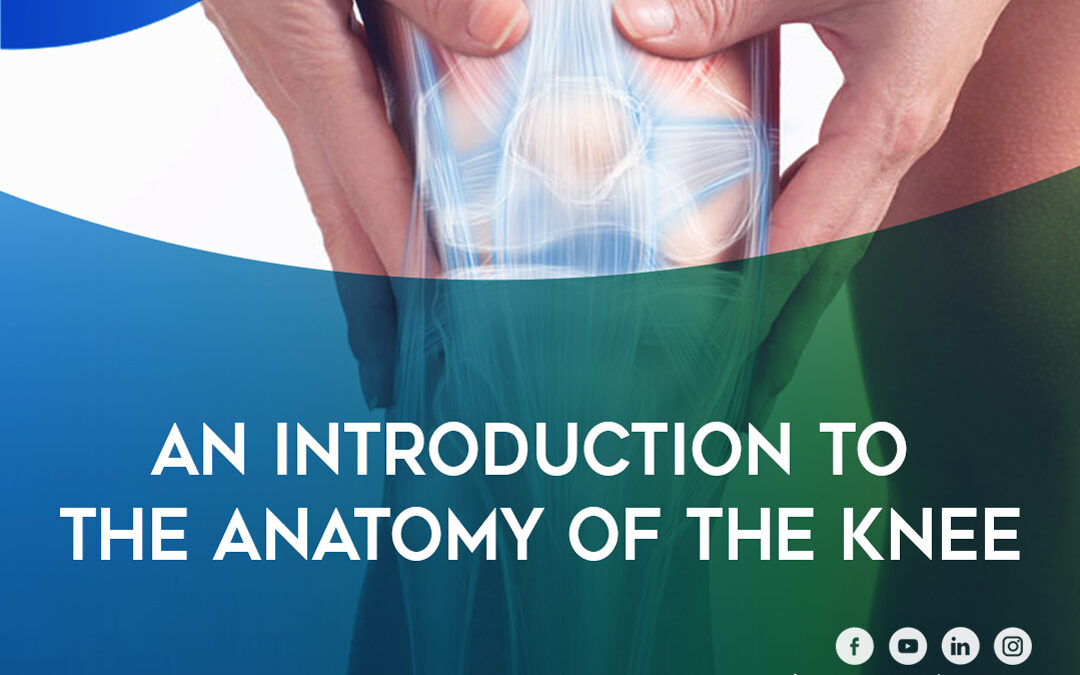The knee is one of the largest, most complex and most mobile joints in the human body. As a weight-bearing joint, it endures a lot of stress from daily movements and exercise. The knee is the joint most commonly affected by wear and tear arthritis (osteoarthritis), and it’s also prone to sports-related injuries.
The knee joint is made up of interconnected bones, ligaments, tendons, cartilage, and other tissues. Keep reading to learn the basics of knee anatomy and common conditions that affect each part of the knee.
Bones
The knee is a hinge joint made up of four bones that join the upper leg to the lower leg. The “hinge” means the knee can extend and bend forward and back, but it has very little side-to-side mobility.
- The thigh bone (femur) in the upper leg connects to the shin bone (tibia) in the lower leg
- The calf bone (fibula) connects to and runs along the side of the tibia
- The kneecap (patella) is a small bone that sits at the front of the knee
A dislocation is the most common injury that affects the bones of the knee. Traumatic events like car crashes, falls, direct blows, or sports accidents can lead to a partial or complete dislocation of the knee or dislocation of the kneecap.
Tendons and Ligaments
Ligaments are strong, elastic bands of tissue that connect bone to bone. They help keep joints from excessive movement — stretching or tearing ligaments leads to joint instability. The knee includes four primary ligaments that provide stabilization and support for the joint.
- Anterior cruciate ligament (ACL)
- Posterior cruciate ligament (PCL)
- Medial collateral ligament (MCL)
- Lateral collateral ligament (LCL)
The ACL and PCL prevent the bones from moving too far forward or backward, while the MCL and LCL prevent excessive side-to-side movement.
Tendons connect muscle to bone. The primary tendon in the knee is the patellar tendon, which attaches the quadriceps muscle in the thigh to the kneecap and tibia.
Ligament tears are a common sports injury among athletes. Sudden twists, abrupt changes in directions, and awkward landings from jumps are responsible for the majority of ligament tears. These injuries cause knee pain, swelling, loss of mobility, and joint instability.
Patellar tendinitis (also called jumper’s knee) is a common overuse injury that occurs when repeated running or jumping irritates and inflames the patellar tendon.
Cartilage
The knee joint contains two types of cartilage. Articular cartilage covers the surface of the joint where the bones meet: the bottom of the femur, the top of the tibia, and behind the kneecap. This cartilage is tough and smooth to allow the bones to glide over each other friction-free during movements like walking, running and bending. Articular cartilage also functions as a shock absorber during movement.
Two c-shaped cartilage discs called menisci sit on each side of the knee between the femur and tibia. The medial meniscus sits on the inside of the knee, while the lateral meniscus sits on the outer side of the knee. These tough, rubbery cartilage discs cushion the bones, absorb shock, and distribute weight evenly between the fibula and tibia during movement.
The knee joint is the most common joint to develop osteoarthritis, a degenerative condition that develops when articular cartilage begins to wear away and degenerate. As cartilage erodes, the resulting bone-on-bone friction leads to pain, stiffness, swelling, inflammation, and loss of joint movement.
Meniscus tears are common sports injuries that occur from rotating or twisting the knee while bearing weight on it. A tear causes knee pain, swelling, locking, loss of range of motion, and knee instability.
Bursae
The knee contains several bursae — fluid-filled sacs that sit between the bones and soft tissues in the joint. Bursae function similarly to cartilage, in that they enable smooth, frictionless movement during knee motions.
Bursitis is a common overuse injury that develops when repeated pressure and stress on the knee causes one or more bursa to become inflamed and irritated.
Call iO-Core for Knee Pain and Knee Arthritis Treatment
If you’re experiencing chronic pain and loss of mobility from arthritis or a non-healing knee injury, or if you’ve been told that joint replacement surgery is the only treatment option left for you, contact iO-Core™.
Our clinics administer the iO-Core™ procedure, a minimally invasive procedure that combines orthopedics and biologics to treat degenerating cartilage and underlying bone and tissue damage caused by arthritis and joint injuries. Many people who were told they needed a total joint replacement surgery have found long-term pain relief and greater mobility from iO-Core™ instead.
If traditional treatment methods aren’t effective for your pain, iO-Core™ may be a viable option. The procedure is covered by most insurances. Contact our team today to learn more and see if you qualify.

